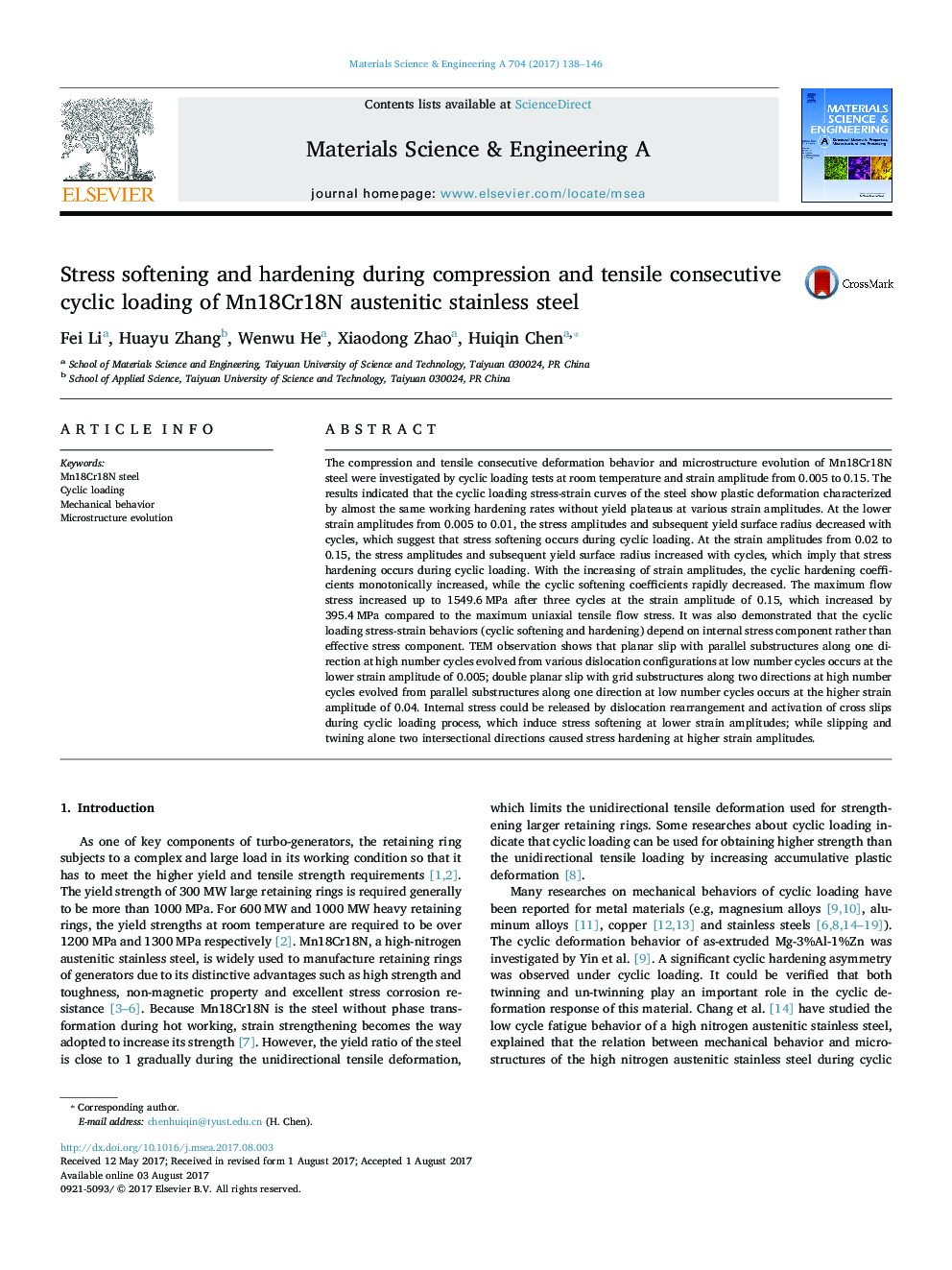| کد مقاله | کد نشریه | سال انتشار | مقاله انگلیسی | نسخه تمام متن |
|---|---|---|---|---|
| 5455570 | 1514639 | 2017 | 9 صفحه PDF | دانلود رایگان |
عنوان انگلیسی مقاله ISI
Stress softening and hardening during compression and tensile consecutive cyclic loading of Mn18Cr18N austenitic stainless steel
دانلود مقاله + سفارش ترجمه
دانلود مقاله ISI انگلیسی
رایگان برای ایرانیان
کلمات کلیدی
موضوعات مرتبط
مهندسی و علوم پایه
مهندسی مواد
دانش مواد (عمومی)
پیش نمایش صفحه اول مقاله

چکیده انگلیسی
The compression and tensile consecutive deformation behavior and microstructure evolution of Mn18Cr18N steel were investigated by cyclic loading tests at room temperature and strain amplitude from 0.005 to 0.15. The results indicated that the cyclic loading stress-strain curves of the steel show plastic deformation characterized by almost the same working hardening rates without yield plateaus at various strain amplitudes. At the lower strain amplitudes from 0.005 to 0.01, the stress amplitudes and subsequent yield surface radius decreased with cycles, which suggest that stress softening occurs during cyclic loading. At the strain amplitudes from 0.02 to 0.15, the stress amplitudes and subsequent yield surface radius increased with cycles, which imply that stress hardening occurs during cyclic loading. With the increasing of strain amplitudes, the cyclic hardening coefficients monotonically increased, while the cyclic softening coefficients rapidly decreased. The maximum flow stress increased up to 1549.6Â MPa after three cycles at the strain amplitude of 0.15, which increased by 395.4Â MPa compared to the maximum uniaxial tensile flow stress. It was also demonstrated that the cyclic loading stress-strain behaviors (cyclic softening and hardening) depend on internal stress component rather than effective stress component. TEM observation shows that planar slip with parallel substructures along one direction at high number cycles evolved from various dislocation configurations at low number cycles occurs at the lower strain amplitude of 0.005; double planar slip with grid substructures along two directions at high number cycles evolved from parallel substructures along one direction at low number cycles occurs at the higher strain amplitude of 0.04. Internal stress could be released by dislocation rearrangement and activation of cross slips during cyclic loading process, which induce stress softening at lower strain amplitudes; while slipping and twining alone two intersectional directions caused stress hardening at higher strain amplitudes.
ناشر
Database: Elsevier - ScienceDirect (ساینس دایرکت)
Journal: Materials Science and Engineering: A - Volume 704, 17 September 2017, Pages 138-146
Journal: Materials Science and Engineering: A - Volume 704, 17 September 2017, Pages 138-146
نویسندگان
Fei Li, Huayu Zhang, Wenwu He, Xiaodong Zhao, Huiqin Chen,